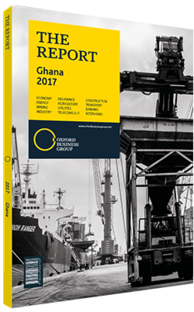Felix Nana Sackey, Managing Partner and CEO, Deloitte Ghana: Viewpoint

Viewpoint: Felix Nana Sackey
International Accounting Standards (IAS) 1 Presentation of Financial Statements is the International Financial Reporting Standard (IFRS) governing the presentation of financial statements and also applicable in Ghana since the Institute of Chartered Accountants Ghana’s adoption of IFRS. IAS 1 Presentation of Financial Statements sets out the overall requirements for financial statements, including how they should be structured, minimum requirements for their content and overriding concepts such as going concern, accrual basis of accounting and the current/non-current distinction. The standard also prescribes the basis for presentation of general purpose financial statements, to ensure comparability both with the entity’s financial statements from previous periods and with the financial statements of other entities.
IAS 1 indicates that a complete set of annual financial statements includes a statement of financial position or balance sheet at the end of the reporting period; a statement of profit or loss and other comprehensive income (OCI) or income statement for the reporting period; a statement of changes in equity; a statement of cash flows; as well as notes, comprising a summary of significant accounting policies and other explanatory information, or notes on the accounts; and a statement of financial position as of the beginning of the earliest comparative period when an entity applies an accounting policy retrospectively or makes a retrospective restatement of items in its financial statements, or when it reclassifies items in its financial statements.
IAS 1 requires separate presentation of those transactions affecting the relevant year’s profit or loss, and those transactions that the standard calls OCI items. This separate presentation can be provided as a statement of profit or loss and OCI, where the profit or loss and OCI items are separated by appropriate headings; or two separate statements, a statement of profit or loss, and OCI. The statement of OCI (SOCI) begins with profit or loss carried forward from the income statement and continues to include all OCI items.
Items the standard states to be items of OCI are exchange differences on translating operations; gains and losses on available-for-sale financial assets; an effective portion of gains or losses on cash flow hedging instruments; actuarial gains and losses on defined benefit plans; changes in a revaluation surplus relating to property, plant and equipment and intangible assets; income tax relating to these OCI components; and share of OCI (after tax) of associates and equity accounted joint ventures.
Regardless of which format is applied, IAS 1 does require presentation of the profit or loss and total comprehensive income attributable to equity holders of the parent and non-controlling interest.
Where an item of OCI is subsequently reclassified to profit or loss, that reclassification is termed a reclassification adjustment. For example, while fair value gains on an available-for-sale financial asset are recognised as OCI items, upon impairment of disposal of such instrument, the balance in OCI will be reclassified to profit or loss.
IAS 1 requires such reclassification adjustment to be presented separately, either in the notes or directly on the face of the SOCI.
A critical objective of the statement of changes in equity is to separately disclose owner and non-owner changes in equity. Owners are defined as holders of instruments classified as equity.
Non-owner changes in equity will be presented separately in a line titled, “total comprehensive income”, with a breakdown thereunder between that related to profit or loss and that related to OCI. For each component of the equity, reconciliation between the carrying amount at the beginningand the end of the period is required to be presented.
You have reached the limit of premium articles you can view for free.
Choose from the options below to purchase print or digital editions of our Reports. You can also purchase a website subscription giving you unlimited access to all of our Reports online for 12 months.
If you have already purchased this Report or have a website subscription, please login to continue.

